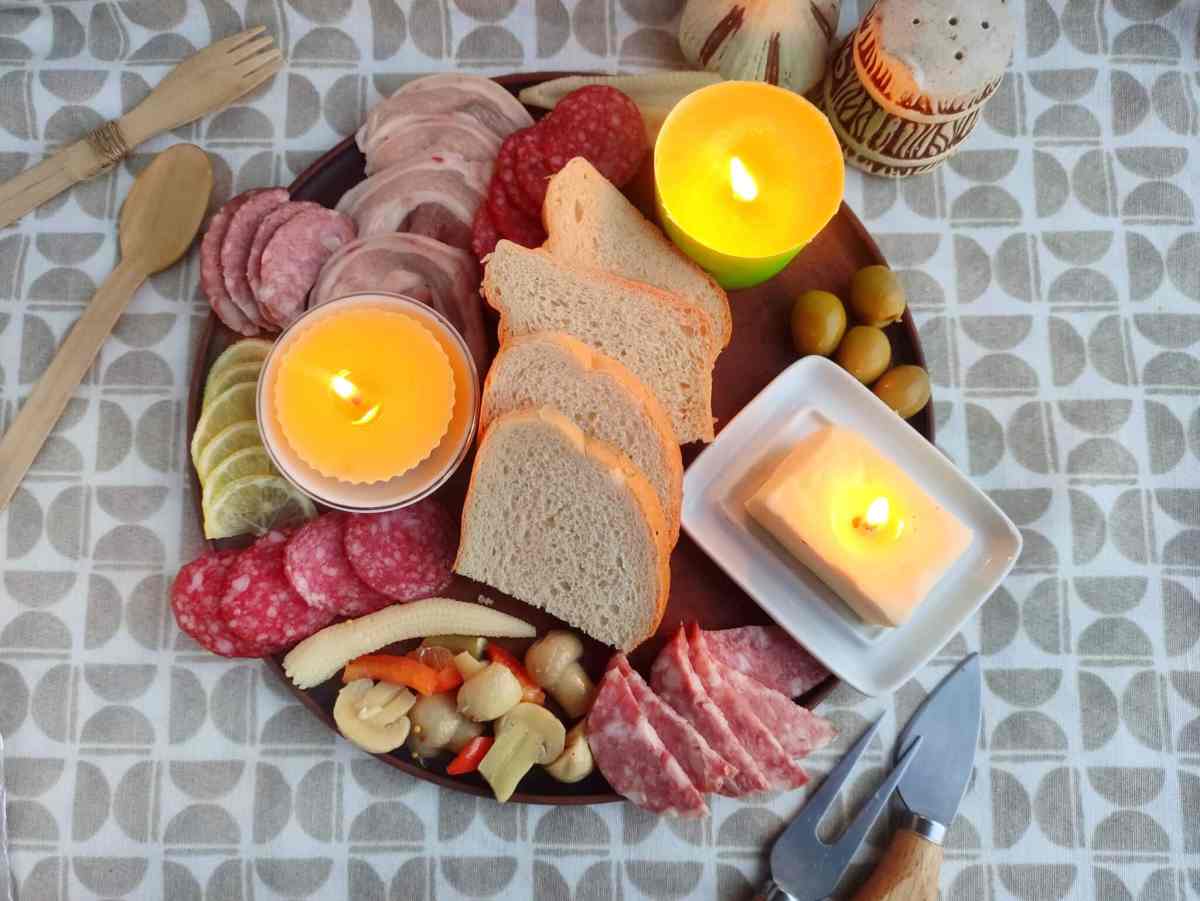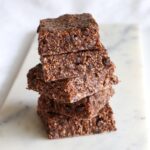Crafting a stunning charcuterie board is an art, but ensuring it’s safe for guests with allergies requires careful planning and execution. This guide dives into the delicious world of allergy-friendly charcuterie, offering practical advice, creative recipes, and expert tips to help you create a visually captivating and completely safe spread for everyone to enjoy. We’ll explore ingredient substitutions, safe handling techniques, and design inspiration, transforming the seemingly daunting task of allergy-conscious entertaining into a fun and rewarding experience.
From identifying common allergens and their suitable replacements to designing visually appealing boards that cater to various dietary needs, we’ll cover everything you need to know. Learn to balance flavors and textures, prevent cross-contamination, and confidently present a charcuterie board that’s both beautiful and safe, leaving your guests impressed and worry-free.
Creating a Balanced Allergy-Friendly Charcuterie Board
Crafting an allergy-friendly charcuterie board requires careful consideration of ingredients and thoughtful presentation. The goal is to create a visually stunning and delicious spread that caters to specific dietary needs without sacrificing flavor or aesthetic appeal. This involves selecting a variety of textures, colors, and flavors while ensuring all items are free from common allergens.
Allergy-Friendly Charcuterie Board Designs
Designing allergy-friendly boards requires planning. Here are three examples showcasing diverse dietary needs: Gluten-Free, Dairy-Free, and Nut-Free. Each board emphasizes vibrant colors and textures for maximum visual appeal.
- Gluten-Free Charcuterie Board: This board bursts with vibrant colors and textures. Imagine a base of deep crimson grapes nestled beside slices of bright orange sweet pepper. Scattered amongst them are vibrant green olives, providing a salty counterpoint. A selection of gluten-free crackers, perhaps rosemary and sea salt, offer a satisfying crunch. Thinly sliced prosciutto, with its delicate pink hue, adds a savory element, and a small bowl of creamy dairy-free hummus provides a rich, earthy note. Finally, a sprinkle of fresh herbs, like parsley or chives, adds a pop of fresh green and a subtle aromatic touch.
- Dairy-Free Charcuterie Board: This board focuses on earthy tones and robust flavors. Imagine a foundation of dark brown, earthy mushrooms, roasted to perfection. Alongside them, golden-yellow slices of mango offer a sweet and juicy contrast. A selection of dairy-free cheeses, perhaps a cashew-based cheddar alternative, adds a creamy texture. Sun-dried tomatoes, deep red and intensely flavorful, provide a burst of umami. Crisp, dark green kale chips contribute a healthy and satisfying crunch. Finally, a drizzle of olive oil, with its vibrant green-gold sheen, ties all the elements together, adding a subtle sheen and rich aroma.
- Nut-Free Charcuterie Board: This board plays with a range of textures and colors. Imagine a base of sunflower seed crackers, providing a satisfying crunch and light golden hue. Next to them, juicy, crimson strawberries offer a sweet counterpoint. Slices of vibrant orange carrots add a touch of sweetness and a bright color. A selection of sunchoke chips, offering a creamy, light-brown texture and subtle earthy flavor, adds a unique element. A small bowl of creamy dairy-free, nut-free dip, perhaps a white bean dip, provides a smooth, light beige contrast. Finally, thin slices of bright pink cured ham provide a savory counterpoint.
Arranging the Charcuterie Board for Visual Appeal
Arranging a charcuterie board is an art form. Careful consideration of color, texture, and height creates a visually appealing and balanced presentation.
- Establish a Foundation: Begin by arranging larger items, such as bowls of dips or larger cheeses, to create a base for the board. Consider color and placement to create visual balance. For example, a bowl of bright red peppers can be balanced by a bowl of deep green olives on the opposite side.
- Introduce Color and Texture Contrast: Next, add items with contrasting colors and textures. For instance, place creamy dips next to crunchy crackers, or bright red fruits next to deep green vegetables. The interplay of colors and textures adds visual interest and depth.
- Build Height and Dimension: Create visual interest by varying the height of the items. Use small bowls, stacks of crackers, or strategically placed items to add dimension and prevent a flat appearance. For instance, a small pile of dried cranberries can add a pop of color and height next to a flat slice of cheese.
- Add Finishing Touches: Finally, add smaller items like fresh herbs or edible flowers to fill gaps and enhance the overall aesthetic. These details add pops of color and texture, bringing the board to life.
Creating a Visually Appealing Board: A Demonstration
Imagine a dairy-free board: a base of deep green kale chips provides a textured foundation. Nestled amongst them are creamy white dairy-free cheese cubes, offering a stark contrast in both color and texture. Scattered across the board are vibrant orange slices of mango, adding a pop of juicy sweetness and a contrasting color. The deep red of sun-dried tomatoes adds a rich, earthy note, creating a visually stunning focal point. Finally, a drizzle of golden-green olive oil ties the elements together, adding a glossy sheen and enhancing the overall visual harmony. The combination of textures – crunchy kale, creamy cheese, and juicy mango – and the vibrant color palette creates a board that is both delicious and visually arresting.
Safe Handling and Storage of Allergy-Friendly Foods

Creating a truly allergy-safe charcuterie board requires meticulous attention to detail, beginning long before the first guest arrives. Safe handling and storage practices are paramount to prevent cross-contamination and ensure the well-being of your guests with allergies. Neglecting these steps can transform a thoughtful gesture into a potentially hazardous situation.
Preventing cross-contamination is the cornerstone of safe allergy-friendly food handling. This means avoiding any contact between allergy-free ingredients and potential allergens. Imagine a vibrant display of colorful cheeses and cured meats, meticulously arranged to avoid any accidental mingling. This visual separation is just the first step. Thorough cleaning of all surfaces and utensils is equally crucial, ensuring that no lingering traces of allergens remain to contaminate the allergy-free items.
Preventing Cross-Contamination
Cross-contamination can occur through direct contact, indirect contact via utensils, or even airborne particles. Visualize a knife used to cut a cheese containing dairy, then used to slice gluten-free crackers without being washed. This seemingly small oversight can trigger a severe allergic reaction. To mitigate this risk, use separate cutting boards, knives, and serving utensils for each allergy group. Designate specific areas within your kitchen for preparing allergy-friendly items, ensuring a clear separation from areas where other foods are being handled. For instance, one side of the counter could be dedicated to the allergy-friendly charcuterie board preparation, while the other is used for preparing other dishes.
Proper Labeling and Storage
Clear and unambiguous labeling is crucial. Imagine a collection of small containers, each meticulously labeled with the ingredient list and any potential allergen warnings. This is not just a helpful precaution; it’s a necessity. This allows for easy identification and prevents accidental consumption of allergens. Utilize permanent markers on clearly visible labels, noting not only the ingredients but also the date of preparation and any relevant storage instructions. Store allergy-friendly ingredients separately from other foods, ideally in airtight containers to maintain freshness and prevent cross-contamination through odor or airborne particles.
Safety Checklist for Allergy-Friendly Charcuterie Boards
Before embarking on the creation of your allergy-friendly charcuterie board, review this checklist to ensure a safe and enjoyable experience for all your guests:
- Designate separate preparation areas and utensils for allergy-friendly foods.
- Thoroughly wash and sanitize all surfaces and equipment before and after handling allergy-friendly items.
- Clearly label all ingredients and containers, including allergen warnings.
- Store allergy-friendly ingredients separately from other foods in airtight containers.
- Check ingredient labels carefully for hidden allergens, especially those that might be cross-contaminants (e.g., shared processing facilities).
- Use separate serving utensils for each item on the board to prevent cross-contamination.
- Inform guests about the allergy-friendly nature of the board and any potential cross-contamination risks that may still exist.
Recipe Ideas for Allergy-Friendly Charcuterie Board Components
Crafting an allergy-friendly charcuterie board requires careful consideration of ingredients, ensuring a delicious and safe experience for everyone. The following recipes provide creative and flavorful options for building a stunning and inclusive board. Each recipe is designed to be easily adaptable to different dietary needs and preferences.
Gluten-Free Rosemary Crackers
These delicate, subtly savory crackers are a perfect base for any allergy-friendly charcuterie board. Their herby aroma complements a wide range of toppings.
- Preheat your oven to 350°F (175°C). Line a baking sheet with parchment paper.
- In a medium bowl, combine 1 ½ cups gluten-free all-purpose flour blend, ½ teaspoon dried rosemary, ¼ teaspoon salt, and ¼ cup olive oil. Add ¼ cup of water gradually, mixing until a dough forms. The dough should be slightly sticky but manageable.
- Roll out the dough on a lightly floured surface to about ⅛ inch thickness. Use a cookie cutter or knife to cut into desired shapes.
- Place the crackers onto the prepared baking sheet and bake for 12-15 minutes, or until golden brown and crisp. Let cool completely before serving.
Dairy-Free Creamy Dill Dip
This vibrant, herbaceous dip offers a refreshing contrast to richer charcuterie components. Its creamy texture is achieved without using any dairy products.
- In a food processor, combine 1 cup raw cashews (soaked in hot water for at least 30 minutes), ½ cup water, 2 tablespoons nutritional yeast, 2 tablespoons fresh dill, 1 tablespoon lemon juice, 1 clove garlic, and ¼ teaspoon salt.
- Process until completely smooth and creamy, adding more water if needed to reach desired consistency. Taste and adjust seasoning as needed.
- Transfer to a serving bowl and chill for at least 30 minutes before serving to allow flavors to meld.
Nut-Free Sunflower Seed Spread
A delightful alternative to nut butters, this spread provides a rich, earthy flavor and satisfying texture. It’s perfect for spreading on crackers or vegetables.
- Toast ½ cup sunflower seeds in a dry skillet over medium heat for 5-7 minutes, stirring frequently, until lightly browned and fragrant.
- Transfer the toasted seeds to a food processor and add 2 tablespoons olive oil, 1 tablespoon lemon juice, and ¼ teaspoon salt.
- Process until a smooth, creamy paste forms. Add more olive oil if needed to adjust consistency.
- Taste and adjust seasoning as necessary. Transfer to a serving bowl and chill for at least 30 minutes before serving.
Homemade Allergy-Friendly Fruit Chutney
This vibrant chutney adds a sweet and tangy counterpoint to the savory elements of the charcuterie board. It’s easily customizable to your preferred fruits and spice levels.
- Combine 2 cups chopped apples (such as Granny Smith or Honeycrisp), 1 cup chopped pears, ½ cup chopped cranberries, ½ cup chopped red onion, ¼ cup apple cider vinegar, ¼ cup maple syrup, 1 tablespoon grated fresh ginger, 1 teaspoon ground cinnamon, and ½ teaspoon ground cloves in a medium saucepan.
- Bring the mixture to a simmer over medium heat, stirring occasionally. Reduce heat to low and continue to simmer for 20-25 minutes, or until the fruits are softened and the chutney has thickened slightly.
- Remove from heat and let cool completely before serving. The chutney will thicken further as it cools.
Ensure all fruits and vegetables are thoroughly washed before use. Adjust the sweetness and spice levels to your preference by adding more or less maple syrup and spices.
Allergy-Friendly Charcuterie Board Dip Variations
Three distinct dip options are provided to add variety and visual appeal to your board.
- Roasted Red Pepper and Walnut-Free Hummus: Combine roasted red peppers, chickpeas, tahini (ensure it’s nut-free if necessary), lemon juice, garlic, and olive oil in a food processor until smooth. This offers a vibrant color and a subtly smoky flavor.
- Spicy Avocado Dip: Blend ripe avocados, lime juice, jalapeño (deseeded for less heat), cilantro, and a pinch of cumin for a creamy, zesty dip with a kick. This adds a vibrant green color to the board.
- White Bean and Artichoke Dip: Mix cannellini beans, marinated artichoke hearts, olive oil, lemon juice, garlic, and fresh parsley for a flavorful and elegant white dip. This offers a creamy texture and a refreshing taste.
Creating allergy-friendly charcuterie boards is more achievable than you might think. By carefully selecting ingredients, employing safe handling practices, and embracing creative design elements, you can confidently host gatherings that are inclusive and enjoyable for everyone. Remember, the key is meticulous planning, a keen eye for detail, and a dash of culinary creativity. So, gather your ingredients, unleash your inner artist, and prepare to impress your guests with a stunning and safe charcuterie masterpiece.
Q&A
What if I don’t know my guests’ specific allergies?
Always ask your guests directly about their allergies and intolerances. If unsure, it’s best to err on the side of caution and prepare multiple smaller boards with clearly labeled ingredients.
Can I use pre-packaged allergy-friendly items?
Yes, but always carefully check labels for potential cross-contamination warnings and hidden allergens. Look for certifications if needed (e.g., gluten-free certification).
How long can I keep an allergy-friendly charcuterie board?
Refrigerate your board promptly after preparation. Most allergy-friendly charcuterie boards should be consumed within 24 hours for optimal freshness and safety.
What are some good alternatives to nuts for nut-free boards?
Sunflower seeds, pumpkin seeds, and roasted chickpeas offer satisfying texture and flavor alternatives to nuts.


